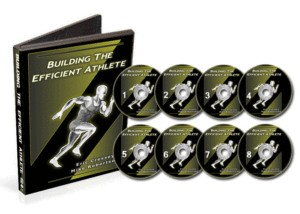7 Steps for Attacking Continuing Education in the Fitness Industry
In response to a recent blog, one reader posted a question about how I “structure” my approach to continuing education. As I thought about it, it’s actually a more organized “ritual” than I had previously thought. Here are the key components:
1. I always have two books going at a time. One involves training/nutrition/manual therapy/rehabilitation. The other involves business/personal development. Noticeably absent from this list is fiction; I really don’t have any interest in it, and couldn’t tell you the first thing about Lord of the Rings or Harry Potter. I’ll usually have a book on CD in the car as well, but nowadays, my commute is non-existent (since we moved closer to the facility), so I have been doing more reading and less listening than previously.
2. Our staff in-service is every Wednesday at 10:30AM. This has turned into a great continuing education opportunity for all of us. While one person is “responsible” for presenting the topic each week, it always inevitably becomes a “think tank” among our staff and interns about how something applies to specific clients, unique issues, functional anatomy, or our programming or business model.
For instance, last week, I talked about how to assess shoulder external rotation and address any identified deficits on this front. We got to talking about which clients were using the appropriate mobilizations, how to perform them, and what would happen if they are performed incorrectly. Likewise, we talked about how certain people need to be careful about mobilizing their shoulders into external rotation because of extreme congenital laxity and/or extreme humeral retroversion.
Beyond just the benefits of helping our staff grow as a whole, for me, it has several distinct benefits. First, when I come back from a weekend seminar where I’ve learned something good, it’s a great opportunity to “reteach” and apply it immediately. I’m a firm believer that the best way to master something is to have to teach it to someone else. Second, having pretty frequent “mini-presentations” keeps my presenting skills fresh for seminars when I may have 4-6 weeks between speaking engagements.

3. I get to at least 4-5 weekend seminars per year. I’m lucky in that two of these are generally Perform Better Three-Day Summits where I get to see a wide variety of presentations – with all my travel expenses paid because I present myself.
I think that every fitness professional needs to get to at least two such events per year. The good news is that with webinars and DVD sets, you can save a ton on travel expenses and watch these on your own schedule. A lot of people, for instance, have said that they learned more from our two-day Building the Efficient Athlete Seminar DVD Set than they did in years of college – with no tuition payment required, either!
That said, a ton of the education at such events comes from interacting with other fitness professionals, so you do miss out on the accidental “social” education.
4. I have one day a week where all I read are journal articles. Sometimes it is entertaining, and sometimes it’s like reading stereo instructions. It depends on journal – and regular ol’ luck with respect to what’s going on in the research world. I’ll keep it pretty random and just type in a search term like “sports medicine” or “strength training.” We also have The Journal of Bodywork and Movement Therapies delivered to the office so that our staff can look that over.
5. I read a few blogs/newsletters each day in both training/nutrition/manual therapy/rehabilitation and business/personal development. I’ve listed several on my recommended resources page. There are loads more out there; these are just the tip of the iceberg and the ones that I tend to read more frequently.
6. I’ll usually have a DVD set or webinar going as often as possible. We’ve got a great library in the office at Cressey Sports Performance, and I’m fortunate to have a lot of stuff sent to me for free to review here on the blog. I tend to prefer DVDs more than webinars, as I can watch them in fast-forward and make people talk faster to save time!
7. I talk to and email with a handful of other coaches about programming and business ideas and new things we’re doing. I wouldn’t call it a mastermind group, or anything even close to one in terms of organization, but it is good to know that whenever I want to bounce an idea off someone, I have several people I can contact. On the training side of things, a few guys that come to mind are Mike Robertson, Neil Rampe, Mike Reinold, Bill Hartman, and Tony Gentilcore. On the business side of things, I’m lucky to have Alwyn Cosgrove and Pat Rigsby as good dudes who are only an email or phone call away. I think that the take-home message is that if you surround yourself with the right people, answers that would normally elude you are really right at hand.
This post wound up running a lot longer than I’d anticipated, but hopefully you all benefited from it nonetheless. Have any continuing education strategies of your own that I have overlooked? If so, please post them in the comments section below.
Sign-up Today for our FREE Newsletter and receive a FREE deadlift technique video!




